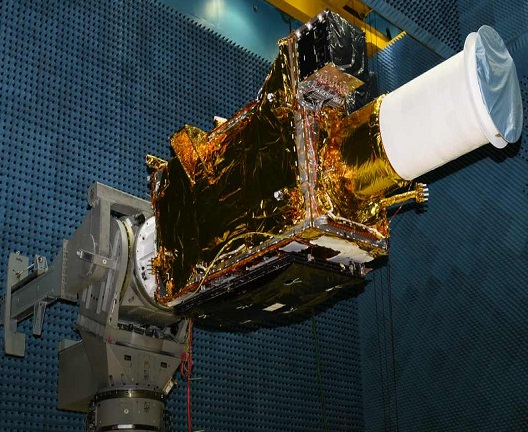GISAT-1: Why in news?
India has planned to launch an earth observation satellite that would provide it near real-time images of its borders and will also be helpful in monitoring natural disasters. It was planned to be launched on March 28, 2021.
As per the staff of ISRO, "We are looking to launch this Geo imaging satellite on 28 March 28, subject to weather conditions.”
What is Geo Imaging Satellite (GISAT 1)?
- GISAT-1 is planned to be sent into space by GSLV-F10 rocket from Sriharikota spaceport located in Andhra Pradesh's Nellore district
- It is a series of satellites with the first satellites named GISAT 1 and next being GISAT 2. These are earth observatory satellites (EOS-03)
- The satellite weighs as much as 2268 kilograms
- It is the first state of the art agile Earth observation satellite
- It would be placed in a Geosynchronous Transfer Orbit by GSLV-F10
- It would then be positioned in the geostationary orbit which is almost 36000 kilometres above the Earth's surface over the equator.
- An onboard propulsion system would be used to do so

What is GSLV F10:
- It is India's Geosynchronous Satellite Launch Vehicle Mark II (GSLC Mk II).
- It is the largest launch vehicle developed by India that is currently operational.
- GSLV F10 happens to be the launching GISAT 01 in its 14th Flight.
As per the space officials, "With onboard high-resolution cameras, the satellite will allow the country to monitor the Indian landmass and the oceans, particularly its borders continuously".
Also Read|Explained: Space Situational Awareness (SSA) Control Centre launched by ISRO
Objectives of the GISAT-1 Satellite:
- It would provide near real-time imaging of the large area of the Indian subcontinent at frequent intervals
- This satellite will be helpful for quick monitoring of natural disasters or any short-term events/ episodes
- It would help obtain spectral signatures of agriculture, forestry, mineralogy etc.
- It would also help in disaster management by issuing regular warning, cloud properties, snow and glacier and oceanography
About SSLV:
As per some media houses, GISAT-1 will be followed by the maiden flight of Small Satellite Launch Vehicle, ISRO’s compact launcher, most probably in April 2021.
SSLV would meet the launch on demand requirements while managing the costs for smaller satellites by sharing rides
The three stage solid vehicle has the capacity to launch 500 kilograms of satellite into 500 km low earth orbit. It can also launch 300 kilograms of load into Sun Synchronous orbit. Thus this mini launcher in future would have multiple satellite mounting options for nano, micro and small satellites.
Comments
All Comments (0)
Join the conversation